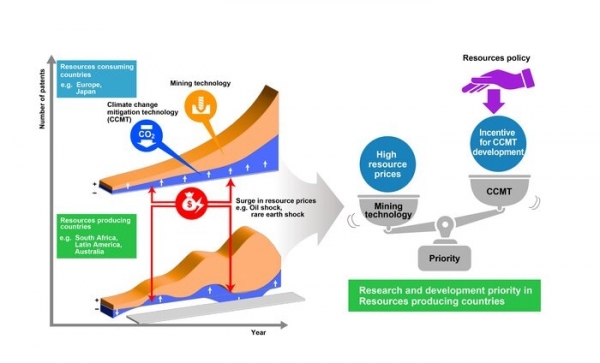As the world confronts the ongoing climate crisis, moving to greener technology has become a requirement in every facet of our lives. Naturally, industries critical to our daily lives are also moving to integrate such technology into their operations.
All of these depend in some way on the industry that extracts and processes the raw materials used to make most green technologies: the mining industry. But the economic and policy factors that drive the mining sector to become more sustainable remain critically understudied.
In a report published in Resources Policy, Hidemichi Fujii from Kyushu University's Faculty of Economics, Japan, and Andre Yamashita from Luleå University of Technology’s Control Engineering Group, Sweden, analyzed the trends in global patent applications from the mining and minerals sector to reveal strategies for promoting R&D in mining-related climate change mitigation technology, or CCMT.
They found that the development of CCMTs in the industry was influenced by both the Paris Agreement and raw metal price trends, but the degree of influence varies by country and how much the sector contributes to the country's economy.
Read more at Kyushu University
Image: Although the number of mining patents (orange) and CCMT patents (blue) increased in resource-consuming and resource-producing regions, the increase was not uniform. It was in fact determined by the global economic trends that influence the cost of mining resources. The level and type of fluctuation depends on whether the region is resource-consuming or resource-producing. Understanding these trends can allow countries to implement policies that promote the development of CCMT in the mining sector. (Credit: Kyushu University/Fujii Lab/Science Graphics)


